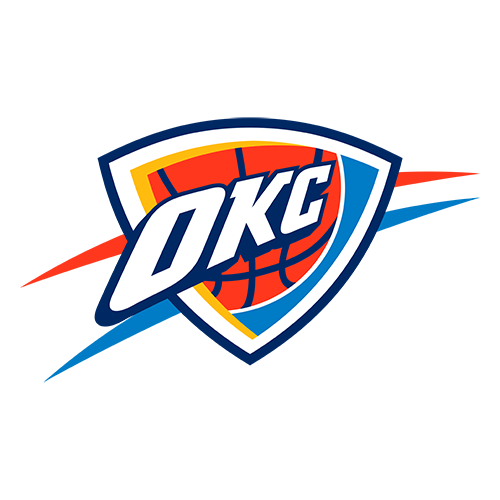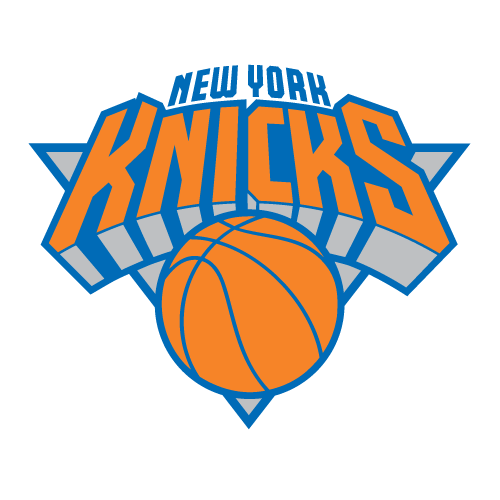NBA insiders
The 2025 NBA conference finals have tipped off, with four teams fighting for a spot in the Finals.
The No. 1 seed Oklahoma City Thunder took a commanding 2-0 lead in the Western Conference finals against the sixth-seeded Minnesota Timberwolves before getting blown out in Game 3 at Target Center. But the Thunder bounced back to win Game 4 in a back-and-forth battle. They head back to Oklahoma for Game 5 and look to close out the series with a 3-1 lead.
In the East, the No. 4 seed Indiana Pacers took a 2-0 lead against the 3-seed New York Knicks at Madison Square Garden. But the Knicks rallied on the Pacers’ home court in Game 3 after a fourth-quarter surge from Karl-Anthony Towns.
As these elite teams face off, our NBA insiders break down their biggest takeaways from every matchup and what to watch for in both showdowns.
Jump to a series:
Pacers-Knicks | Timberwolves-Thunder
More coverage:
Schedules and results | Offseason guides

Western Conference


Game 4: Thunder 128, Timberwolves 126
Biggest takeaways for the Timberwolves:
The formula the Wolves needed to follow to have a chance was obvious by this point in the series: Limit turnovers and make open shots. Minnesota managed to do one of the two in Monday’s 128-126 loss. The Wolves committed 22 turnovers, leading to 22 points for Oklahoma City — with their leaders, Anthony Edwards (5) and Julius Randle (5), being the main culprits. As a result, the Thunder took 11 more shots than the Wolves in a game decided by one possession.
The miscues minimized the incredible contributions of Nickeil Alexander-Walker (23 points on 9-for-15 shooting, 5-for-8 from 3), Jaden McDaniels (22 points on 9-for-15, 3-for-6 from 3) and Donte DiVincenzo (21 points on 7-for-11, 5-for-8 from 3).
The Wolves shot 18-for-41 from deep, but Edwards and Randle didn’t help that cause, combining to shoot just 1-for-10 from 3.
Credit Minnesota’s overall effort — Edwards kept attacking the Thunder’s box-and-one defense, as flummoxing as it was, and Randle stayed engaged enough to check in to throw Minnesota’s last-ditch inbounds pass. And the Wolves’ bench was historically good, as it became the first unit since starters were tracked in 1970-71 to score 60 bench points in consecutive games in the conference finals.
However, the two-point final margin was the difference between a 2-2 series and the 3-1 hole the Wolves find themselves in heading back to Oklahoma City. — Dave McMenamin
Biggest takeaways for the Thunder:
The 2022 lottery accelerated the Thunder’s climb to the contender ranks. The players from that draft — No. 2 pick Chet Holmgren and No. 12 Jalen Williams — played massive roles in the win that put Oklahoma City on the brink of a Finals appearance.
Williams scored 14 of his 34 points in the fourth quarter. Holmgren had nine of his 21 points in the final frame.
On a night when MVP Shai Gilgeous-Alexander (40 points, 13-of-30 shooting) was a volume scorer, the Thunder’s other stars lit up the scoreboard efficiently. Williams and Holmgren combined to go 22-of-38 from the floor, including 8-of-12 from 3-point range.
It was a brilliant offensive performance at a critical time for two of the league’s best young two-way talents. — Tim MacMahon
Game 4: Thunder at Timberwolves (Wednesday, 8:30 p.m. ET, ESPN)
What to watch:
The first task for the Timberwolves heading back to Oklahoma City for a must-win game is to maintain belief. The Thunder did their best to crush it in Game 4, turning back every Minnesota challenge down the stretch. But we saw the Timberwolves rally in a similar situation last year, coming back from three consecutive Denver Nuggets wins to take Games 6 and 7, the latter on the road.
Meanwhile, Oklahoma City is in a position — one game away from the Finals — that the franchise last experienced in 2016, when the Thunder also took a 3-1 series lead but saw the Golden State Warriors rally to knock them out. Oklahoma City’s lone closeout opportunity at home, Game 6, was famous for Klay Thompson’s historic 11 3-pointers.
It’s worth watching whether Minnesota coach Chris Finch makes a change to the lineup that has started all 14 playoff games and all but two dating back to March 7. Reserves Alexander-Walker and DiVincenzo finished Monday’s game in place of starters Mike Conley and Randle, giving the Timberwolves more shooting and defensive versatility.
Benching Randle two games after he scored 24 points on 9-of-15 shooting feels like an overreaction, but swapping Alexander-Walker for Conley is more realistic. Conley hasn’t been an offensive threat in this series, totaling 22 points on 7-of-30 shooting, though his sure-handed playmaking remains a plus for Minnesota. The Timberwolves have outscored the Thunder with Conley on the floor in all four games, including plus-2 in 19 minutes in Game 4. — Kevin Pelton

Eastern Conference


Game 3: Knicks 106, Pacers 100
For three quarters Sunday night, both Karl-Anthony Towns individually and the Knicks collectively looked completely lost. Towns, one of the best scoring bigs in the league, had only four points and was hardly involved. New York, already down 2-0 and with its season hanging by a thread, had been routed for most of the contest and trailed by 10 points entering the fourth.
Then, out of nowhere, Towns took over with 20 fourth-quarter points — including 14 in the first four minutes — to help the Knicks escape with a victory and give New York a chance to even the series Tuesday night.
It only happened because Towns — the star the Knicks acquired on the eve of training camp last fall, the local kid who had an All-NBA season — delivered precisely the kind of moment a player with that résumé is expected to in a situation like this.
There was plenty of pressure on Towns coming into this game. His defensive struggles played a significant role in New York losing Game 2 on Friday night — and in coach Tom Thibodeau choosing to go with Mitchell Robinson in the starting lineup in place of Josh Hart to put another defensive big alongside him.
For much of the Game 3, it looked like Towns and the Knicks were going to be just a punchline. Instead, a fourth quarter for the ages became the latest moment in one of the NBA’s most storied rivalries, and it keeps New York’s NBA Finals dreams alive. — Tim Bontemps
Biggest takeaways for the Knicks:
All it took was the Knicks needing another 20-point comeback for them to get back into this series. All jokes aside, this was likely New York’s gutsiest win of the season given what was at stake.
Even with KAT’s incredible fourth-quarter run, there was no guarantee that Jalen Brunson would come through in the clutch with what turned out to be the game-winning bucket after sitting with five fouls until the 1:37 mark in the final period. A lot of players would not maintain enough rhythm to hit such a tough shot at that moment.
All of a sudden, the Knicks — after trailing by 20 in Game 3 — can spin the narrative to some extent. Their strategy to change the starting lineup left them in a better spot through one quarter than it did in the first two games of the series. Thibodeau got more players from his bench involved, perhaps giving him more options for the remainder of the series. Whatever confidence issues Towns had after two games — defensive or otherwise — should vanish after a stellar fourth that saved New York’s season. — Chris Herring
Biggest takeaways for the Pacers:
After the Pacers “got smashed” — to quote coach Rick Carlisle before Sunday’s Game 3 — by the Cleveland Cavaliers following victories in the first two games on the road in the conference semifinals, the question was whether Indiana would perform better with a chance to put this series out of reach against its long-standing rivals Sunday night.
For much of the game, the Pacers did. Despite not shooting the ball well, they largely shut down Towns and Brunson, and Indiana led by double digits for most of the middle portion of the contest. But after the Pacers stole Game 1 in New York, this one can only feel like Indiana allowed the Knicks to return the favor.
The Knicks had no business winning. And if they hadn’t, the Pacers could start preparing for the NBA Finals. Instead, the Knicks are now just 48 minutes away from tying the series and heading back to New York for what would be an incredible atmosphere in Madison Square Garden for Game 5.
The other thing to watch: Indiana forward Aaron Nesmith, a critical player in this series, sprained his right ankle in the third quarter and didn’t look great after returning in the fourth. With games coming every other day moving forward, his status and mobility will be a key storyline to watch. — Tim Bontemps
Game 4: Knicks at Pacers (Tuesday, 8 p.m. ET, TNT)
What to watch:
Towns deserves a ton of credit for his fourth-quarter burst. But the Knicks won Game 3 largely because of their defense, which held Indiana to 100 points after allowing 138 in Game 1 (125 in regulation) and 114 in Game 2.
With a chance to take a commanding 3-0 series lead, the Pacers suffered their worst shooting game of the playoffs, with their fewest 3-point makes, fewest attempts and lowest percentage. Entering Sunday, the Pacers were the hottest team in the playoffs, making 41% of their 3s; for context, among teams that won at least one round, nobody else was north of 36%. But in Game 3, Indiana shot just 5-for-25 from distance.
How much of that change is a credit to the Knicks’ defense versus mere flukish single-game luck could dictate who wins Game 4. Indiana probably won’t make just 20% of its 3s again — but only 25 attempts is a win for New York, which forced Indiana to take more than half its shots from the less-efficient midrange.
On the other end, a key for Game 4 is how Nesmith’s ankle recovers following his midgame sprain. After sitting for a long stretch of the second half, Nesmith returned for — and was ineffective in — crunch time. But if he is compromised going forward, Indiana could struggle to contain Brunson.
Nesmith isn’t just effective from the perimeter, as he demonstrated to great fanfare in Indiana’s Game 1 comeback. He also is the Pacers’ best option to defend Brunson. Through the first two games of the conference finals, the Knicks’ leading scorer had a 48% effective field goal mark when Nesmith was his primary defender, according to GeniusIQ tracking, versus 63% against Ben Sheppard and 73% against Andrew Nembhard.
Granted, Brunson had his worst game in weeks on Sunday, even as he largely went up against non-Nesmith defenders. But every other Knicks-Pacers playoff game dating back to last spring suggests Indiana’s other options can’t stick with Brunson as well as Nesmith can. — Zach Kram